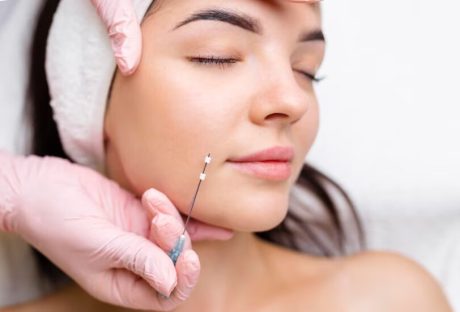Many people tend to think of depression as a temporary phase where someone is sad, and this makes many think that you need to get out of that emotional state. However, the illness is much more than that, as it is the result of changes in the chemistry of the brain.
Like all other conditions that can develop in your body, there are risk factors that raise the chances of you getting the illness, although it is possible you can develop it without the risk factors being present. However, it should be kept in mind that your risk of developing the illness is higher when there are more risk factors, so you need to ask your doctor about reducing these factors.
The risk can be related to a combination of various circumstances such as environmental, psychological, and genetic ones. The NIMH (National Institute of Mental Health) estimates that almost 16 million Americans have experienced a major episode of depression.
Different Reasons Of Sleep Dis-orders & Depression Are As Follows:-
In this article, you will get the complete information of the depression and sleep disorder reasons that can bother you later on.
Risk factors:
Biochemical risks:
The beginning of depression occurs when certain neurotransmitters in the brain are off balance. Neurotransmitters are certain chemicals that the brain produces, and they assist the brain to communicate with other organs in your body. They also assist the brain to carry out certain physiological functions such as breathing.
When these neurotransmitters are at low levels, the person is more vulnerable to depression, particularly certain neurotransmitters – dopamine, serotonin, and norepinephrine.
Genetic factors:

When you have someone in your family who is suffering from the illness, there is a higher chance you will develop it as well. However, it can also develop when there is no family history of the illness, and this is why it is termed as a combination of life events and genetic reasons.
Sleep disorders:
There is a reason why your body needs sleep, as it is able to reduce the buildup of cortisol in the body, a stress hormone that is good for short periods but causes stress to the body when it stays for long periods.
Because of this, it is not surprising to find that people who struggle with sleep disorders will also tend to develop depression, especially those who suffer from insomnia – leading to bouts of low moods.
Suffering from chronic illnesses:
Because these conditions will cause you stress and pain, they can also take a heavy toll on your mental health. These include chronic pain, diabetes, cancer, arthritis, heart diseases, stroke, thyroid disease, Alzheimer’s disease, and multiple sclerosis.
Social risks:
Abuse:

When a person goes through any form of abuse, whether as a child, teen or adult, they have a major risk of developing the condition, and also developing other mental illnesses as well. This abuse can range from emotional, physical, verbal or sexual abuse.
Gender factors:
Men are generally less at risk of developing depression compared to women, but this might be because there are more women who are open to seeking treatment for their symptoms compared to men. Some people also believe that the illness is due to changes in hormone levels throughout the person’s life.
In fact, women are vulnerable to developing the illness when they are pregnant and also after childbirth (postpartum depression), in addition to developing it during menopause.
The lack of a strong support system:
When a person spends a lot of time in isolation, and they have very few support systems or friends, it can be a common source of depression. It is important to note that this is not the same as introversion, and is more described as a feeling of loneliness or extreme changes in a person relating to their moods and emotions.
The occurrence of major events:
This is among the most common reasons for developing depression, mainly relating to stressful or sad events. These include losing a job, divorce or breaking off a relationship, retirement from a job, moving to a new place, and death of a close loved one. If a major event has occurred in your life and you have experienced sadness for more than two months without getting better, then it is best to see your doctor so that you can go through tests for depression.
Substance abuse risk factors:
Abuse of drugs and alcohol:
For many people who are struggling with substance abuse, it is mainly tied to mental health disorders, including depression. This is also known as dual diagnosis, and there are various rehab facilities that can help a person struggling with it, such as Colorado substance abuse treatment centers.
It is also important to note that drug abuse leads to significant changes in the brain, which in turn increase your risk of developing depression. Many people who have developed depression symptoms also tend to self-medicate as well, which increases their symptoms and overall risk.
The use of certain medication:
There are some medicines that raise the risk of developing depressive symptoms as a side effect, and they include blood pressure medication, steroids, prescription painkillers, sleeping pills, and sedatives.
Other factors:
Psychological reasons:
There are some psychological factors that will increase the risk of developing depressive symptoms. For instance, if you have low self-esteem, this makes you view your world through a pessimistic outlook, and raises your risk of depression. It will also leave you with an overwhelming feeling of stress and sadness.
There is also the case of perfectionism increasing your risk, as you do not see things going the way you want them. It also makes you very sensitive to errors, rejection, and losses, which increases your risk of developing the condition. In addition, if you are suffering from another mental illness, such as chronic anxiety disorder, as well as avoidant and borderline personality disorders, your risk of getting depression is significantly higher.
Low socioeconomic status:
You may not think much about it, but it is a major risk factor for the development of the disease. It may be due to cultural reasons, social status, stressful environments, and so on.
Final thoughts:
If you know someone struggling with the illness or you are struggling with it, it is very important to seek medical help. The illness is not well understood, as it is a complex medical condition. The good news is that is easy to treat and manage.
Read Also:
























